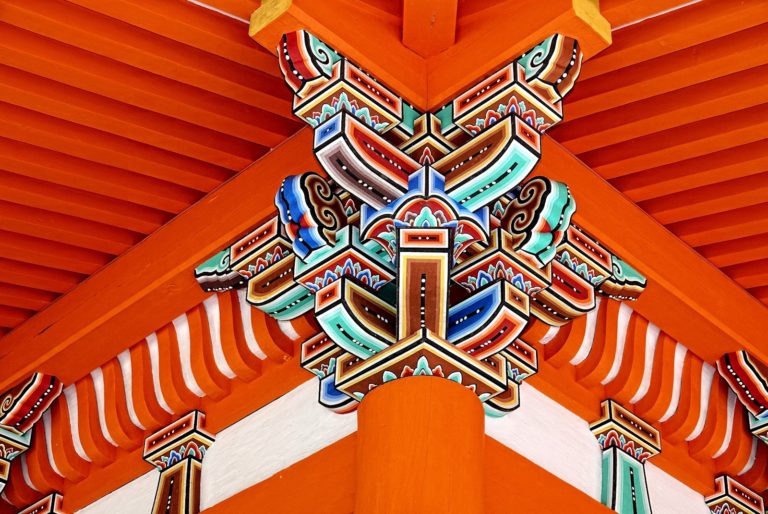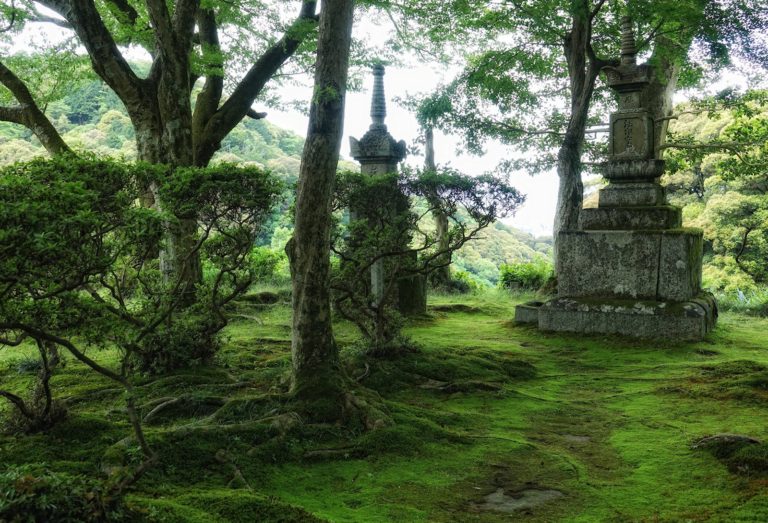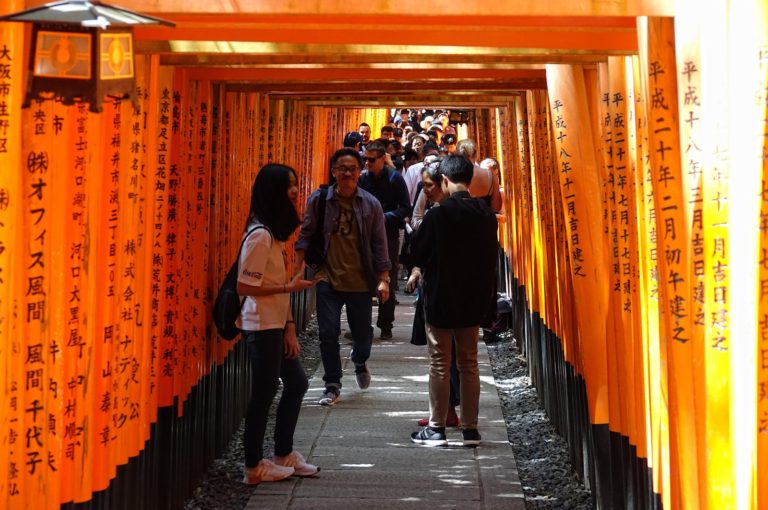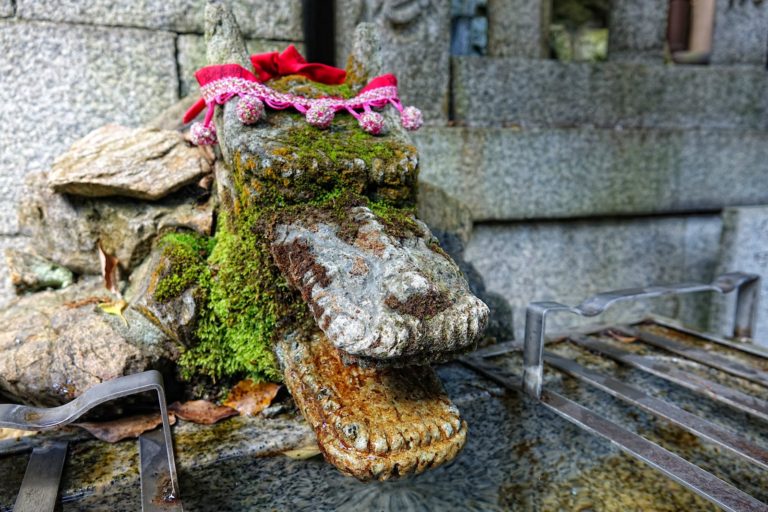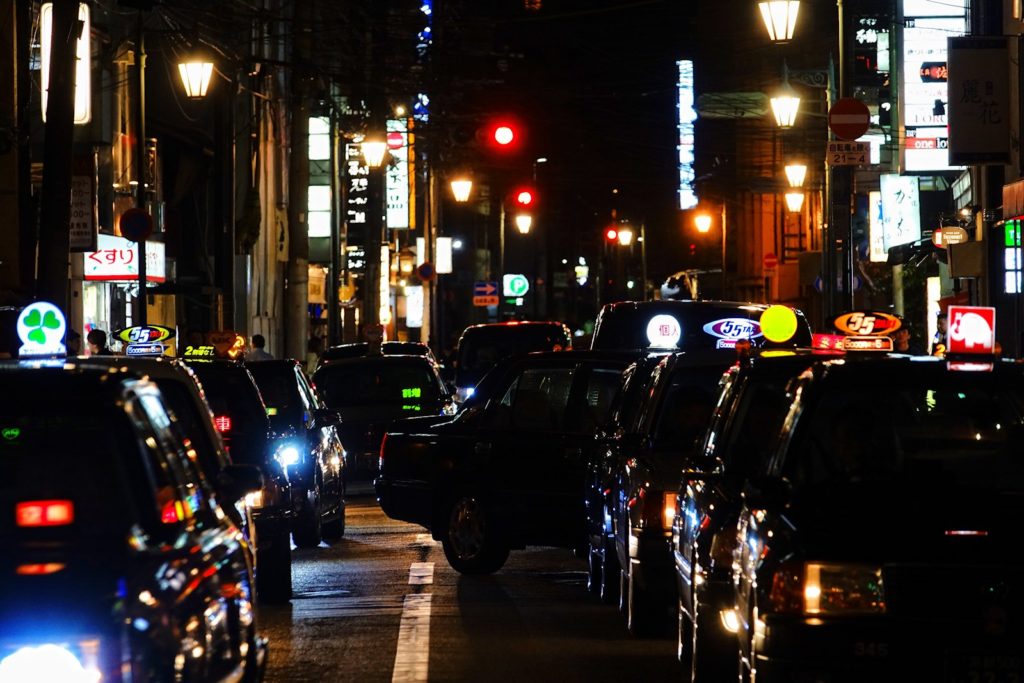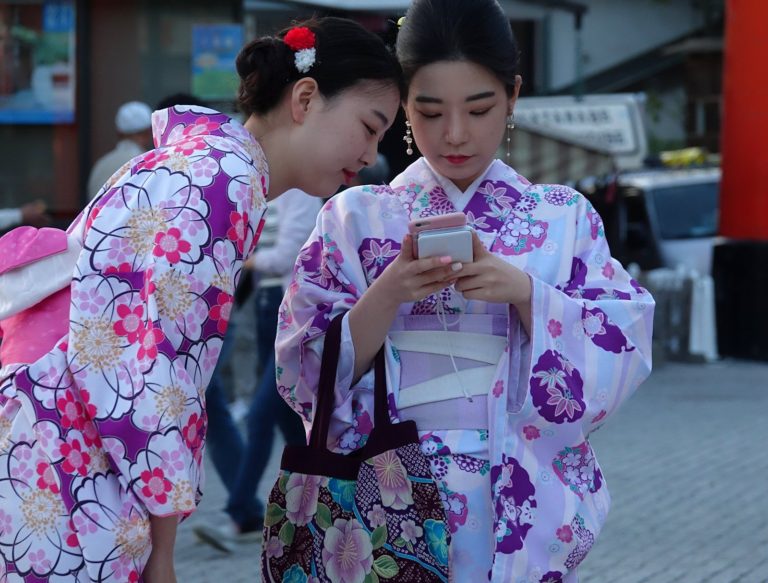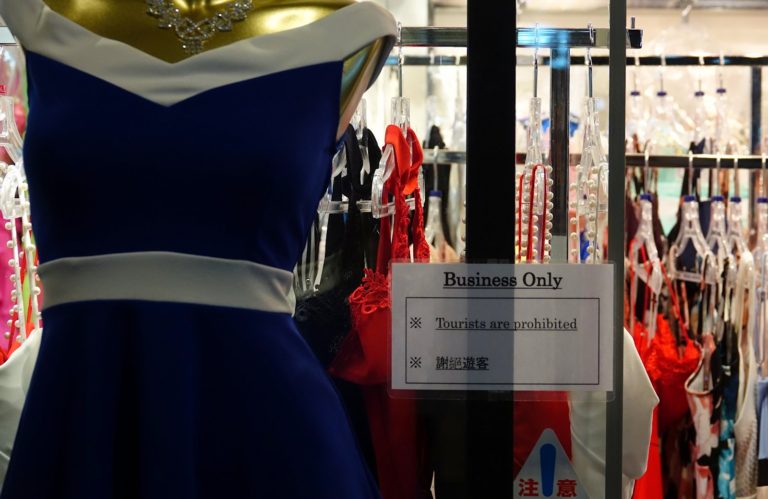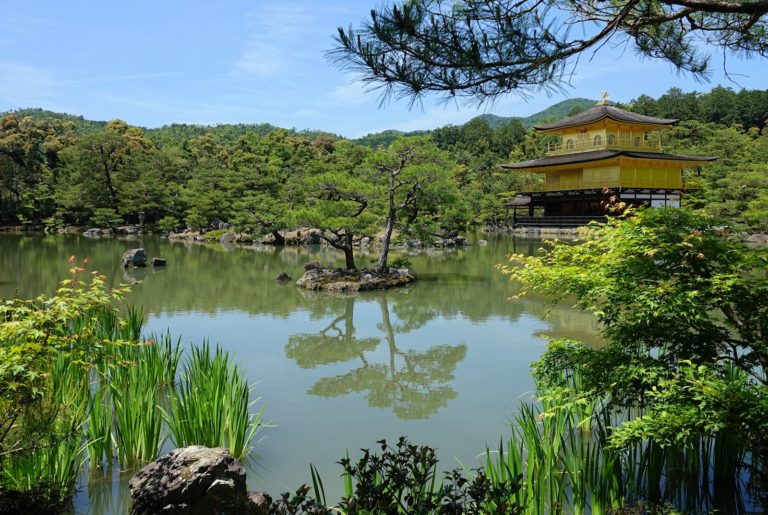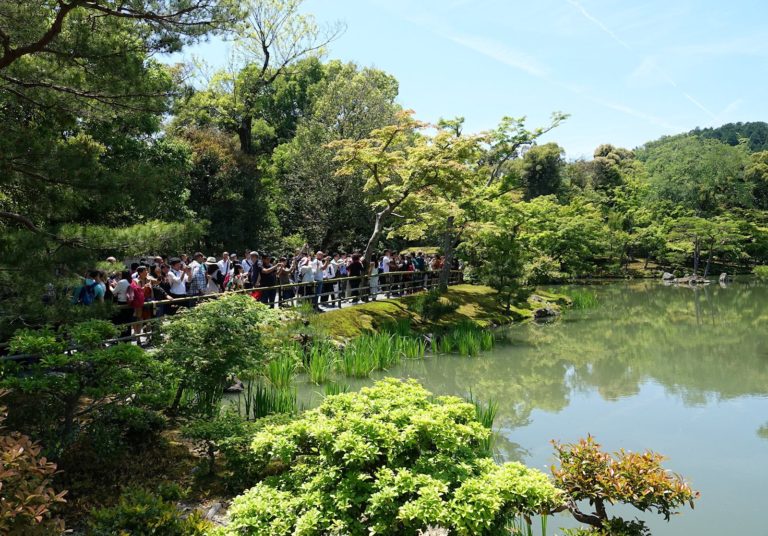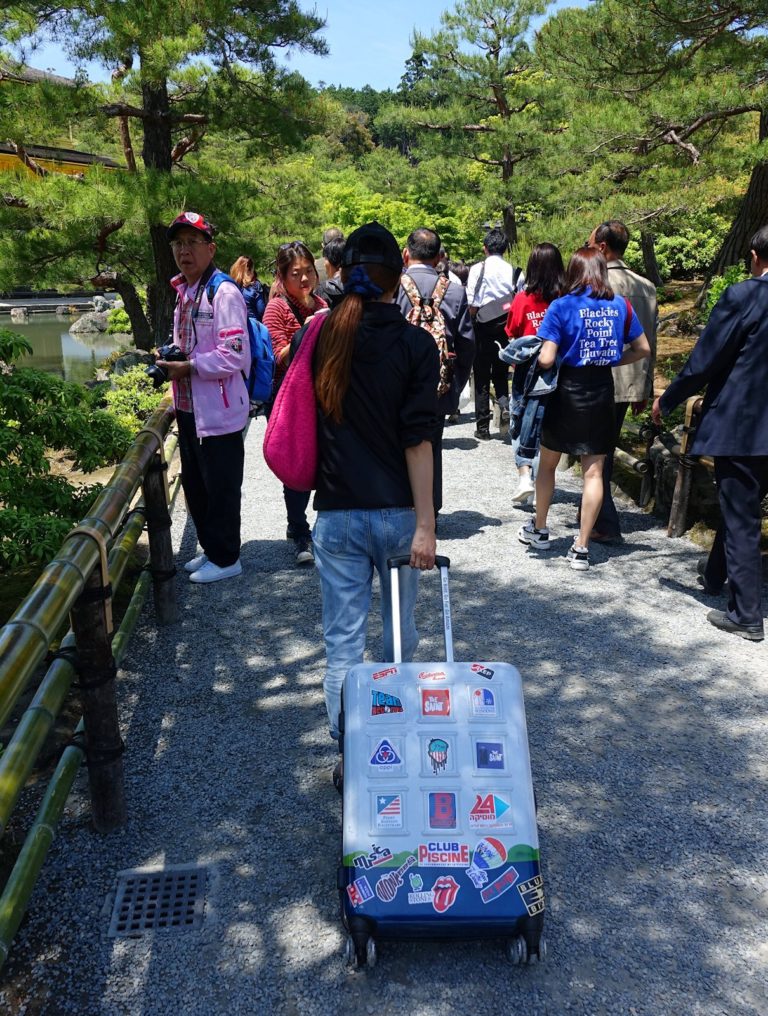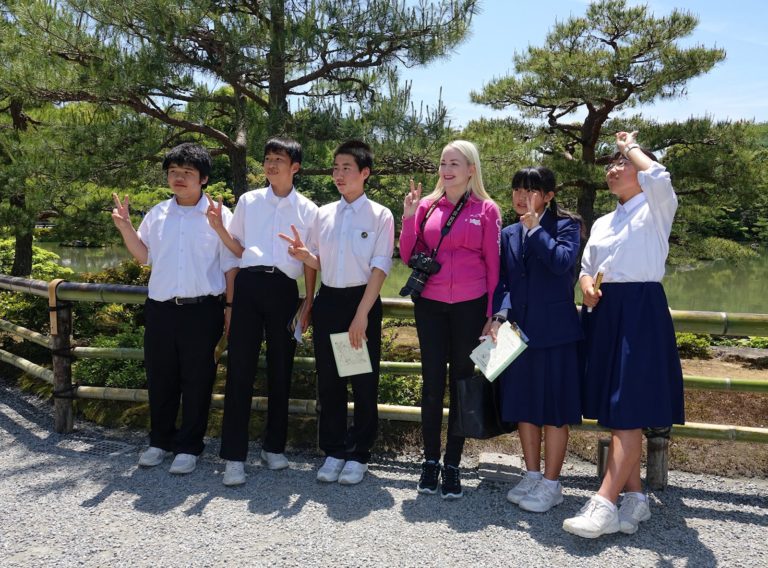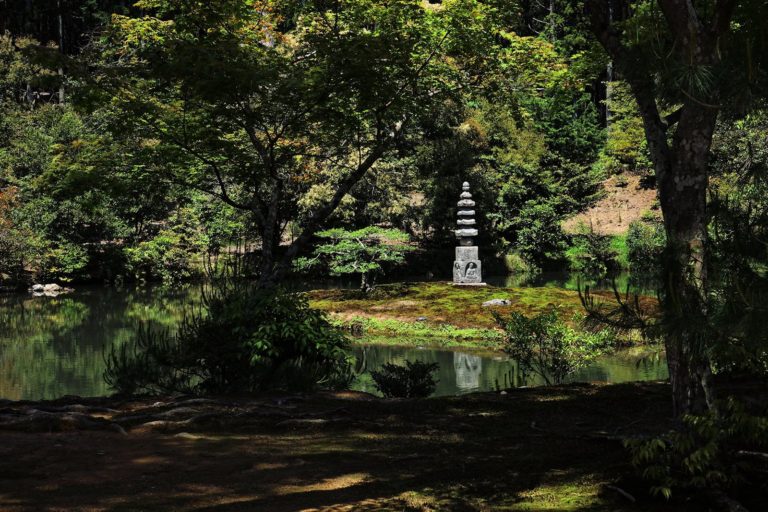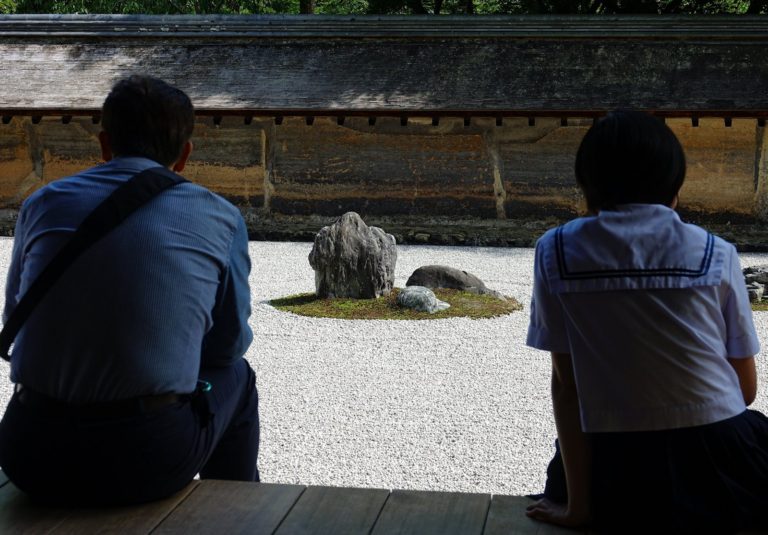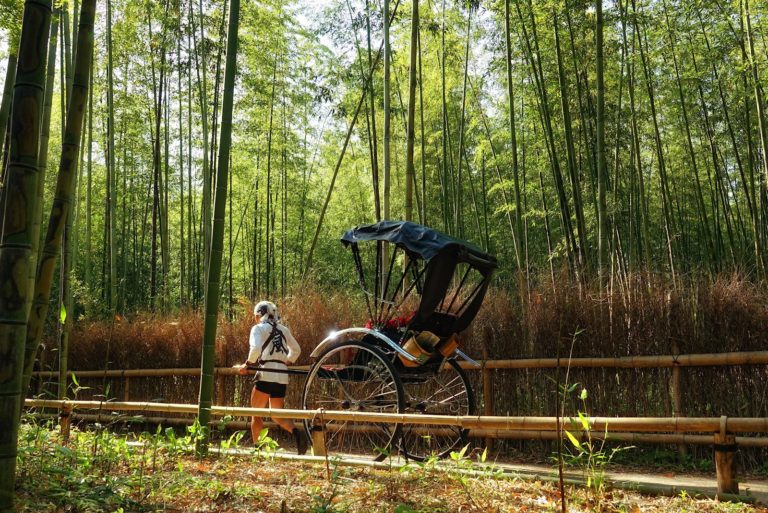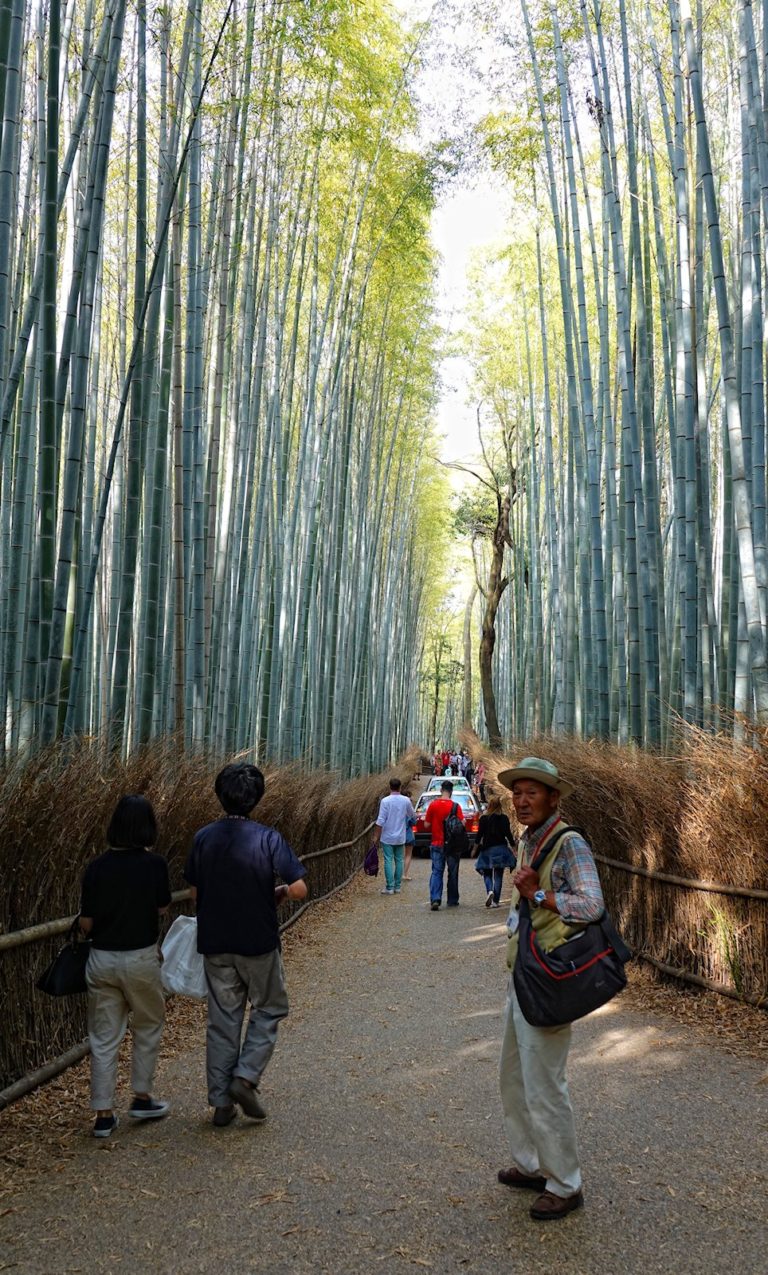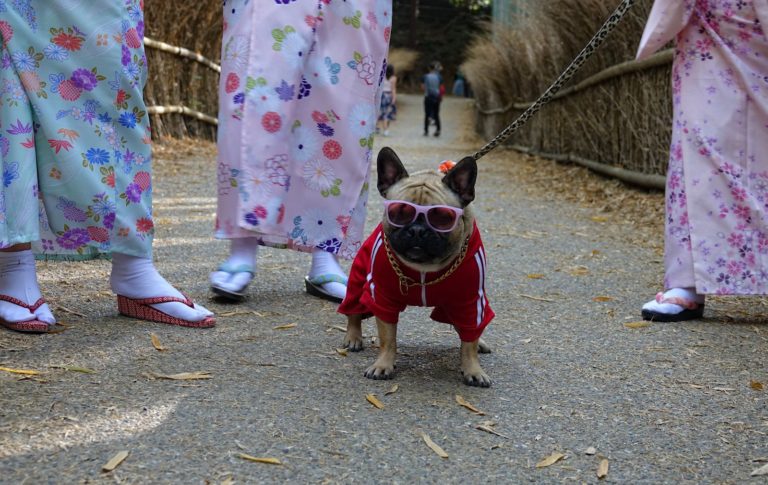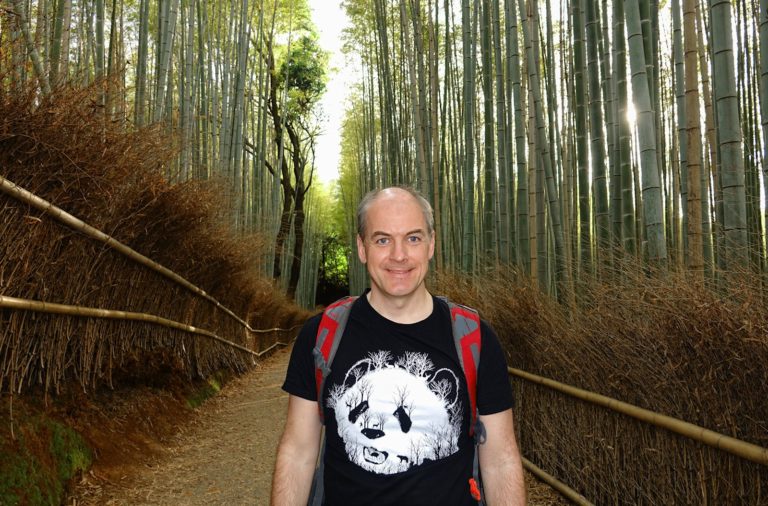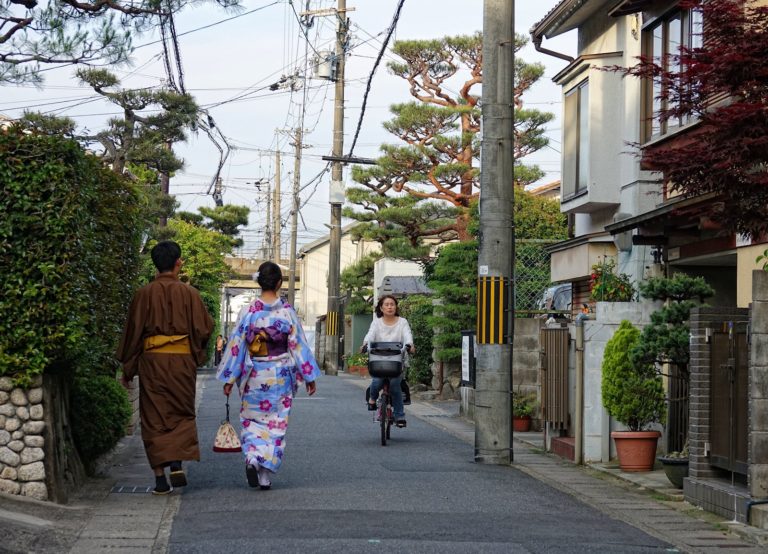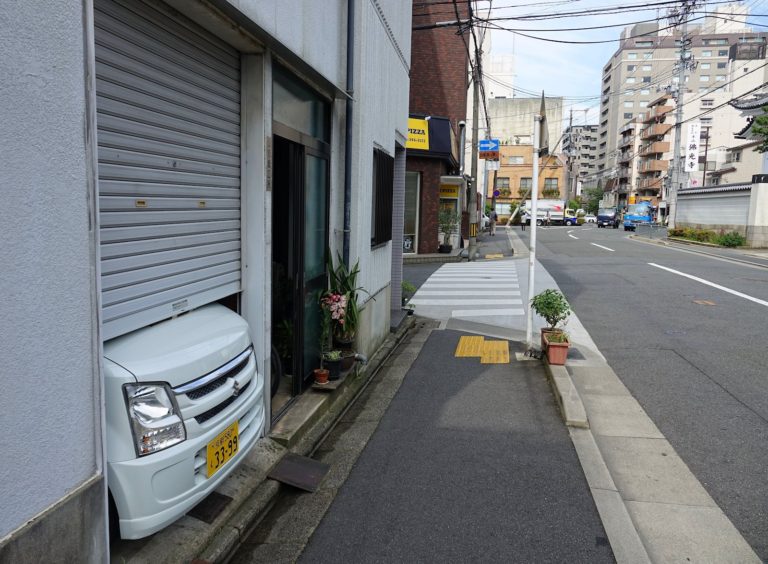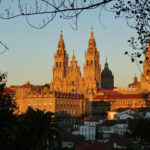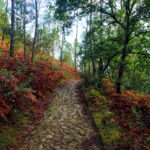Before, all I knew was that Kyoto is highly recommended because whatever. Also, I always thought it weird that Japan moved its capital to Tokyo from somewhere with the exact same letters in it. It’s as if Madmaster suddenly became the new capital of the Netherlands. Anyway, I went, and three days in Kyoto was time well spent. See the following photos for proof.
We arrive in Kyoto late in the day. When we leave the train, we have spent just over 10 hours riding it from Sapporo that same morning. Traveling across half of Japan in just one day is both relaxing and tiring. After getting some food we crawl to bed so that we can be up and out again early. Everything points to that being the smart thing to do when going to the World Heritage site of Kiyomizu-dera. And when we get there, just before 8 in the morning, it looks promising.
The same place, a few hours later, looks like tourism hell. Every street near the temple complex is just as crowded as the temple area. So to all future visitors; when in Kyoto, make sure you get up as early in the morning as you can!
It’s not just tourism that rears its terrifying head in Kyoto today. Kiyomizu-dera has of course a dragon or six guarding the entrance. They’re wonderfully and intensely scary.
Kyoto is both a modern and an ancient city. The old one frames the new one nicely here, looking back from the entrance to Kiyomizu-dera.
The entrance fee for Kiyomizu-dera is low. To finance necessary maintenance caused by the many tourists, there’s a wide range of lucky charms for sale.
You can “Bind your love tightly” for less than 20 dollars, or at least get “More chance for love” for just ten. Later you can get conception, also for ten dollars. Add another fiver, and your delivery will be made easier. Other great deals are “Successful study”, “Traffic safety”, “For against disaster” and “Lucky money”.
It’s a good thing that the owners make big money from good luck charms, because clearly just painting the pagodas must be extremely time-consuming and expensive.
From afar they look like red/orange towers, but when you get close to them you see that a whole rainbow of colors has been used, and that not a single dot on these pieces of building art has been put there randomly.
Escaping from the crowd, we follow a quiet trail that leads into the forest behind Kiyomizu-dera. We end up at the Seikanji Temple. It’s beautifully covered in moss, and the silence here is worth the walk. But don’t tell anyone.
As bad luck would have it, the amazing main temple is undergoing restoration work when we visit, and it is all hidden under a huge scaffolding. So instead of showing you that, here’s the view looking south from the temple, towards the Koyasu Pagoda. You would struggle to build something standing more out of the forest than this does.
With its enthusiasm for hygiene, Japan is unlikely to bring you any stomach issues. Despite this, Japan offers some of the best public toilet facilities in the world. And while the thing you sit on in there often are marvels of engineering, there’s much else to appreciate in a Japanese restroom.
Like this, for example. It’s a baby holder. Insert your offspring here while you go about your business. The instructions insist on that you should not keep your baby there while putting on make-up or smoking, though.
A little bit further south on Kyoto’s east side, we visit the Fushimi Inari Taisha complex. You may not know the name, but you know what it looks like. It’s that place with a massive number of “vermilion red” toriis.
Since the first painted gate was put up here about 1,300 years ago, around ten thousand more have been added. You can now walk through a tunnel of these gates for several kilometers. And you should, because most tourists just walk the first few hundred meters and create traffic jams like the one you see here.
See? After just half an hour of walking past both annoyed and annoying people, you can have a stretch of orange and black gates all to yourself. So much nicer.
Our walk around the loop of ten thousand gates takes us past many fascinating details. Here’s a mossy dragon, several centuries old.
There are sections of the hike where the toriis are more spaced out to make room for various shrines.
Here are two women examining one of the shrines. They proudly wear the Asian tourist uniform as they marvel at stones.
A steady flow of taxis comes and goes to the many bars and various other establishments in the Gion district. None of them seem pleased to see a guy with a camera walking around here.
Coming down from the top, we are exposed to the side of the gates that has writing on it. Companies and organizations that have donated a torii has left their name and/or a message of gratitude for their success.
As a non-Japanese it is easy to jump to the conclusion that this writing must be something really sacred, but generally it’s not.
We make it out of Fushimi Inari just as the sun sets in the west. Our visit took quite a bit longer than we expected, but it was worth both the time and the effort of climbing all those steps.
Like at many of Japan’s other tourist attractions, the kimono rental business is doing extremely well here. I don’t envy these two the task of picking out the best photos from their visit to this Instagram hot spot.
The Inari local train station is small and cozy, especially compared to the giant Kyoto Station only five minutes away. If you want to walk instead, it can be done in about 40 minutes via the magically named Higashikujo Minamimatsunokicho district.
Later on, I head up to the Gion district in Kyoto, famous for being somewhat of geisha central. Or rather geiko, as they call themselves here.
The geishas hard to find, and they really don’t want to be bothered by tourists. But if you randomly walk around in the narrow alleys of Gion, there’s a good chance that sooner or later you will spot an elderly businessman being ceremoniously escorted between his car and a private session by one or more of these “women of art”. It’s decidedly seedy, albeit in a classy kind of way.
A sign outside a fashion boutique emphasizes that Gion is maybe not the most tourist-friendly area.
They seem to prefer an entirely different segment of clients here.
I feel more welcome with my camera in Maruyama Park, where the Eki Shrine does its best to shine in the dark. It’s a crowded place by day, but now I am alone here. All this sacred prettiness draws me towards it, but I manage to tear myself away just in time to get on one of the last buses back to my hotel, around midnight.
Kyoto has all these narrow alleys where every door leads into some kind of drinking and/or eating place, full of people who will look suspiciously at you if you go in. They don’t want their secret spot revealed to the world, and I don’t blame them. If you try, you will find your own. Many of them stay open until very late.
Another “mandatory” stop in Kyoto is the Kinkaku-ji “Golden Pavilion”, on the city’s north-western edge. It has been a Zen temple for about 600 years, with walls covered in gold leaf. The building looks okay, but you can’t really get close enough to get a good look at it. The real draw here is the garden on and around this perfect pond.
As you admire the Golden Pavilion, you’re surrounded by hundreds of other tourists taking the exact same photo as you. There’s nothing wrong with that, of course. The only problem is if you come here and expect a beautiful spot where you can sit and meditate upon whatever. Then you’re likely to be disappointed. This place is busy and noisy.
Something I see surprisingly often in Japan, are tourists on a budget and a schedule so tight that they actually swiftly walk around everywhere with their luggage in hand. With a backpack it would be sort of okay, but with a suitcase on wheels, on gravel, it’s less convenient.
We’re often approached by groups of students who want to practice their English. They all ask the same questions and do not really seem to understand our answers that well. It’s all good. Every session ends with a happy group photo and smiles all around.
Quiet and almost invisible from the trail through the park at Kinkaku-ji, this picturesque little pagoda on a tiny islet just stands there, ignored by most. It’s half a millennium old, at least. Still, it’s not even deemed worthy of a sign to indicate its existence.
Within walking distance from Kinkaku-ji is another famous temple, Ryōan-ji.
This one comes with a stone garden. A stone garden is a big stone surrounded by small stones. Here’s what it has to say about itself: “As one gazes at the garden, contemplating a shroud of mystery, every time yet another facet of the garden is revealed”.
I think a single visit will do for me, thank you. I mean, it’s pretty, in a weird sort of way, but I’m not much of a Zen hipster.
Japanese cities tend to have their highlights spread out across a large area, requiring a fair bit of bus travel to see them all. This is what they typically look like on the inside; a few seats for the weak and the elderly, and lots of standing room. Enter at the middle and exit at the front, where you also pay your fare directly to the driver. It’s usually done by swiping a prepaid card which you can get at various offices where people speak at least some English. It’s easy.
The bus takes us a few kilometers westwards, to the Arashiyama bamboo grove. We arrive just in time to see this massive grass forest in a warm, late afternoon light.
Rickshaws are available for romantic rides through the bamboo forest, but it is rather costly. And while they invite you to “Soak in the view of the seemingly endless bamboo stalks at famous Arashiyama Bamboo Grove”, in real life it is just a tiny forest. We turn down the offer. It looks nice, though.
We have seen countless incredibly pretty photos from Arashiyama, and with some patience we’re able to take a few copycat photos ourselves. But it’s really difficult, because most of the relatively tiny bamboo grove is full of people that came for the same reason as we did.
We recognize everything. There’s no doubt that we have come to the right place. But so have hundreds of others.
Most of the time, this is what the serene and seemingly endless bamboo stalks look like. There are even taxis with tourists in a rush coming through!
There’s no Venice Beach in Kyoto, but the trail through the Arashiyama bamboo grove around sunset is probably as close to a freak show you can get in this area.
Here’s a dog wearing sunglasses, some bling and a jumpsuit. Because why not?
There are lots of people behind me here. Thanks to some creative positioning of yourself relative to the camera, we manage to take a photo where it appears that it is possible to experience solitude in this forest.
I made an effort to dress for the occasion.
The Arashiyama neighbourhood is a posh one. There are pretty houses and gardens and smiling people all around. Even those who live here. Or especially those who live here, possibly.
No wonder they’re happy here. There seems to be availability of unlimited time in Arashiyama!
Before returning to Tokyo, we have time for a quick morning walk. We head up from Kyoto Station to the park surrounding the old Kyoto Imperial Palace. The palace hasn’t opened yet, but the Kujo Pond and the nearby shrines will do just nicely for now. There seems to be beautiful temples and shrines wherever we walk in Kyoto.
Kyoto’s backstreets have the least stressed out morning commuters I’ve seen anywhere.
This is an example of a special class of compact cars in Japan, “kei cars”.
They’re recognized by their yellow license plates and a very short distance between the driver and the front of the car. These cars are cheaper to buy, insure and own than other cars. And even more importantly, before buying one of these, you don’t have to certify that you have adequate parking available for it at your home. As proven here.
On our way back to Tokyo we stop off in Nagoya for a few hours. Using a train, it doesn’t cost any extra. Besides, it’s a rare opportunity to geek out at the Port of Nagoya Public Aquarium. They have emperor penguins here! It’s the one in the middle in this photo, flanked by a gentoo penguin to the left and an Adélie penguin to the right.
That is all. To sum it up: Visiting Kyoto is fine.
Practicalities
Getting to Kyoto from Tokyo is really easy. Just under two and a half hours on the Shinkansen high speed train from Tokyo Station, and you’re there. A cheaper option, about half the price, is to take a bus. This will take about 8 hours, though, and those extra hours are probably better spent in Tokyo or Kyoto. There are overnight buses, at about the same price, so that may be an option for you.
We stayed at the Kyoto Tower Hotel, because it is extremely conveniently located just next to the train station, and because there was a great promotion going on. The room was excellent and the receptionist spoke good English. (Their booking system isn’t that great, so try from any other hotel search engine.)





